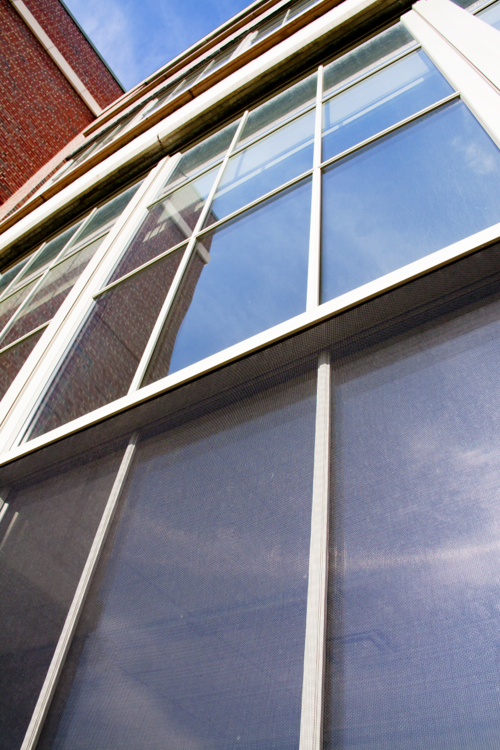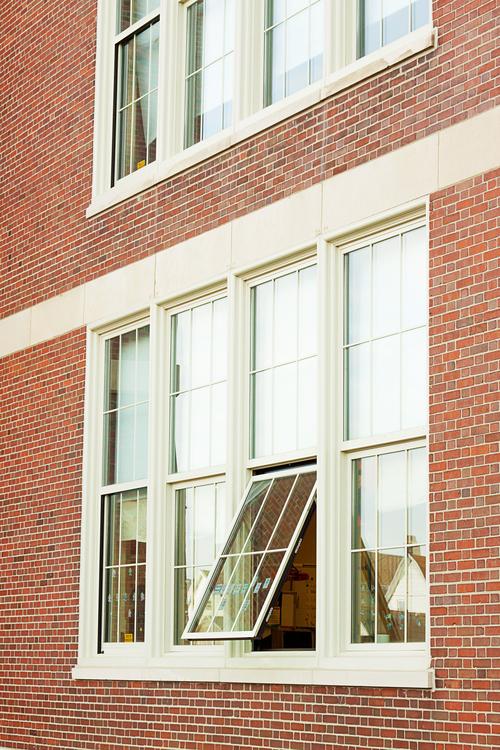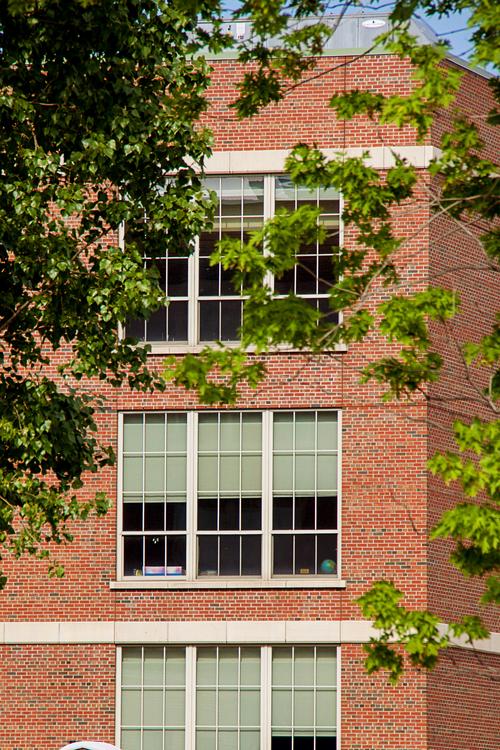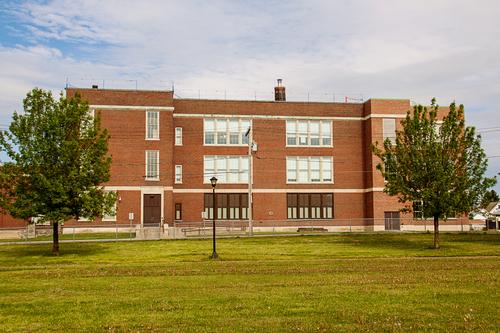刷新霍顿学院的外观

Houghton Academy replaced 125 aging, inconsistent windows (shown on 1st floor) with a unified look, customized to match the school's historic aesthetic using dual color finishes and high performance windows featuring Technoform's polyamide thermal barrier for energy efficiency, structural performance and long-term durability (shown on 2nd and 3rd floor).
Constructed in 1924, Houghton Academy - Buffalo Public School #69 in Buffalo, New York was designed by the Associated Buffalo Architects Inc. The U-shaped floor plan surrounds a courtyard in the rear and a classic revival style entrance in the front. The auditorium and gymnasium are situated at the four-story center of the building with three-story wings accommodating classrooms and future additions. The brick and stone structure is punctuated with large window bays. Over time, the windows were replaced without preserving the architectural integrity. This resulted in inconsistent window types, trim and colors.
Christine Hentz, architect with the Buffalo Board of Education, elaborates, “In the 1970s, the windows were replaced, many with sliders on the bottom and aluminum panel infill. The windows on the front elevation around the courtyard were replaced about 15 years ago along with the east and west elevations.” In 2007, Houghton Academy underwent a major renovation adding 25,500 square feet, bringing the school’s total square footage to 99,890. Hentz says, “New windows were installed in the new addition that resembled the originals, but we didn’t get new windows in the existing corridors of the buildings.”

In 2012, approximately $500,000 was allocated for window replacement and masonry repairs on the school. The masonry was completed that September. Immediately following this, T.G.R. Enterprises’ glazing team began the window replacement. Working after school hours to avoid disrupting students and faculty, the field crew completed the project in November. To ensure a successful result, T.G.R. Enterprises worked closely with Wausau Window and Wall Systems to present a window mock-up for approval. New York State Historic Preservation Office reviewed and approved the documents from Hentz’ office. The Board of Education also approved the final submissions.
Wausau provided T.G.R. Enterprises with its 310i Series single-hung and 4250i-XLT INvent™ Series project-out windows. Both are manufactured using Technoform’s polyamide thermal barriers, known generically as “thermal strip.” Wausau’s custom-contoured panning profile helped replicate the look of the windows’ original profile. The majority of windows also feature glazed-in grid muntins with beveled profiles to accentuate the classic appearance. Linetec painted the panning, muntins and windows’
exteriors in a Sandstone colored 70% Polyvinylidene Fluoride (PVDF) two coat, in-house blend.
“Seventy percent PVDF coatings offer the ultimate protection in building performance. These are some of the most durable coatings available,” says Linetec’s senior marketing specialist, Tammy Schroeder, LEED® Green Associate. “Their long lifecycle reduces the need for maintenance and replacement and minimizes the associated time, cost and materials.”
Houghton Academy’s windows’ Sandstone paint color matches the stonework surrounding them. Hentz explains, “I selected a color that matched the limestone. On the interior, we maintained the original wood frame, trim and sills. The woodwork is finished in this brownish olive color that is very specific to our schools. It’s practically impossible to match, so we went with a Dark Bronze on the windows’ interior finish that looks nice.”
The Dark Bronze not only is a different color, but also an entirely different finish process. Because it is an integral part of the substrate, anodize highlights aluminum’s natural beauty and metallic appearance. The anodic coating results in a hard, durable substance providing excellent wear and abrasion resistance with minimal maintenance.
Because interior and exterior components can be finished before assembly of the thermal strip system dual-color designs, or even dual finishes, can be achieved easily and efficiently. With other thermal improvement systems, dual-color, or “two-tone,” finishing involves painting one side of the material one color; then masking it off and painting the other side a different color.
Because two different finishing types were used on Houghton Academy windows – paint and anodize, any other thermal barrier method would not have been an option for this project. For two-color frame finishing using paint at the interior and exterior, Linetec estimates that Technoform’s thermal strip system painted assemblies are 400% less expensive than other thermal barrier methods that require time-consuming masking. “When the building design calls for different interior and exterior finishes, thermal strip becomes the most economical option,” says Schroeder. “When a two-tone anodize is specified – or a paint and anodize interior/exterior, like this project – it is practically impossible to accomplish with anything other than thermal strip.”
When a two-tone anodize is specified – or a paint and anodize interior/exterior, like this project – it is practically impossible to accomplish with anything other than thermal strip.
Tammy Schroeder, LEED® Green associate - Linetec architectural paint finishing

Success story
Today, Buffalo Public School #69 Houghton Academy serves more than 500 pre-kindergarten through 8th grade students, faculty and staff. It is one of 65 facilities in a district of 37,000 students.
“Ultimately no one can deny the success of this reconstruction and historic preservation program. The district realizes that strong, successful schools are vital for the city to thrive. In addition, these facilities are the focal points within their neighborhoods and can be the catalyst for community redevelopment,” noted Buffalo Public School’s director of facilities, planning, design and construction, Paul McDonnell, AIA, in a column for Buffalo Rising.
McDonnell also is former president of the Buffalo/Western New York chapter of the American Institute of Architects (AIA), president of the Campaign for Greater Buffalo History, Architecture and Culture and chairperson of the Buffalo Preservation Board. He concluded, “Buffalo has been able to maintain the integrity of its architecturally significant schools while creating learning environments that are a match to any other in New York State.”






